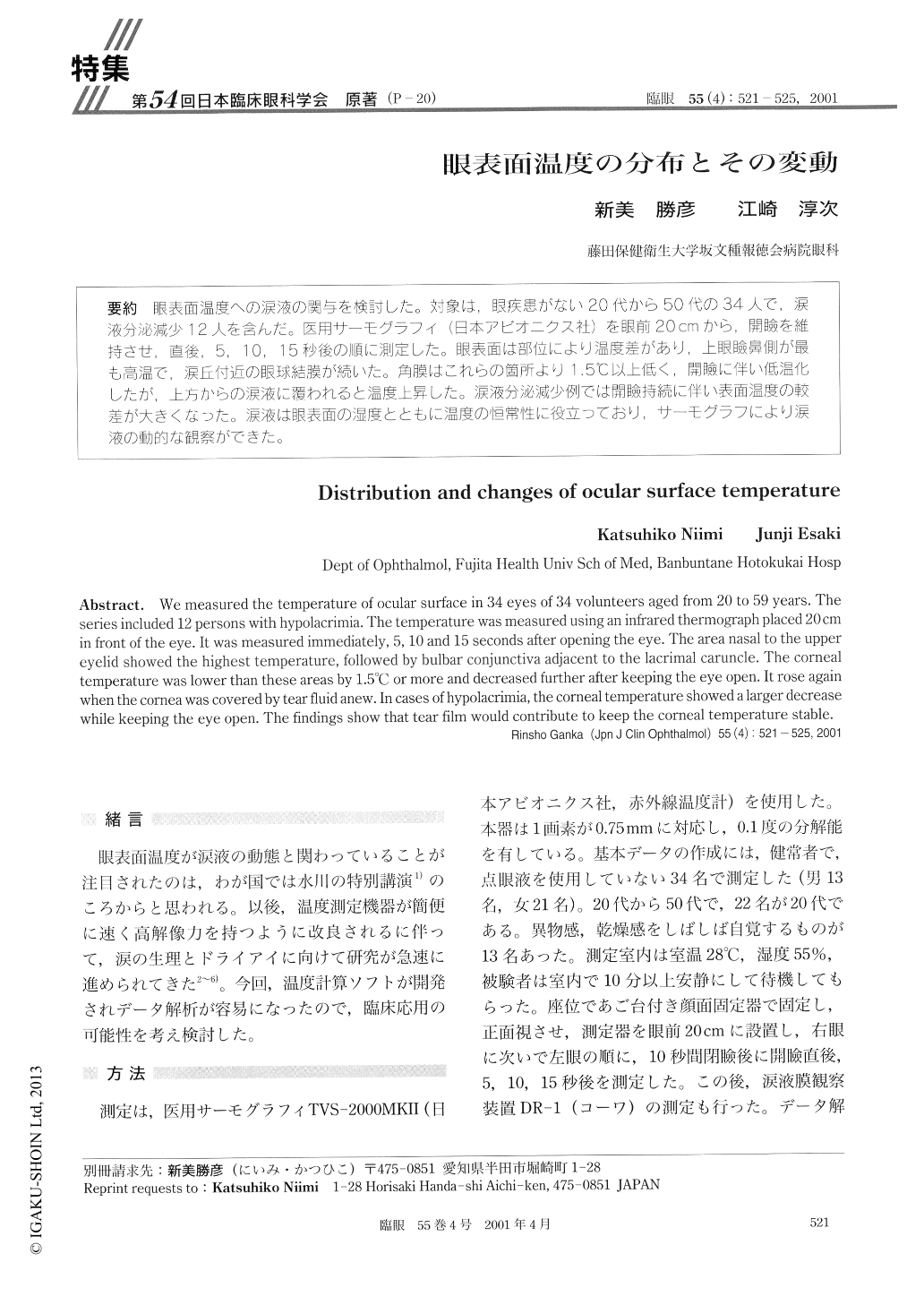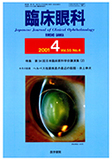Japanese
English
- 有料閲覧
- Abstract 文献概要
- 1ページ目 Look Inside
眼表面温度への涙液の関与を検討した。対象は,眼疾患がない20代から50代の34人で,涙液分泌減少12人を含んだ。医用サーモグラフィ(日本アビオニクス社)を眼前20cmから,開瞼を維持させ,直後,5,10,15秒後の順に測定した。眼表面は部位により温度差があり,上眼瞼鼻側が最も高温で,涙丘付近の眼球結膜が続いた。角膜はこれらの箇所より1.5℃以上低く,開瞼に伴い低温化したが,上方からの涙液に覆われると温度上昇した。涙液分泌減少例では開瞼持続に伴い表面温度の較差が大きくなった。涙液は眼表面の湿度とともに温度の恒常性に役立っており,サーモグラフにより涙液の動的な観察ができた。
We measured the temperature of ocular surface in 34 eyes of 34 volunteers aged from 20 to 59 years. The series included 12 persons with hypolacrimia. The temperature was measured using an infrared thermograph placed 20cm in front of the eye. It was measured immediately, 5, 10 and 15 seconds after opening the eye. The area nasal to the upper eyelid showed the highest temperature, followed by bulbar conjunctiva adjacent to the lacrimal caruncle. The corneal temperature was lower than these areas by 1.5゚C or more and decreased further after keeping the eye open. It rose again when the cornea was covered by tear fluid anew. In cases of hypolacrimia, the corneal temperature showed a larger decrease while keeping the eye open. The findings show that tear film would contribute to keep the corneal temperature stable.

Copyright © 2001, Igaku-Shoin Ltd. All rights reserved.


